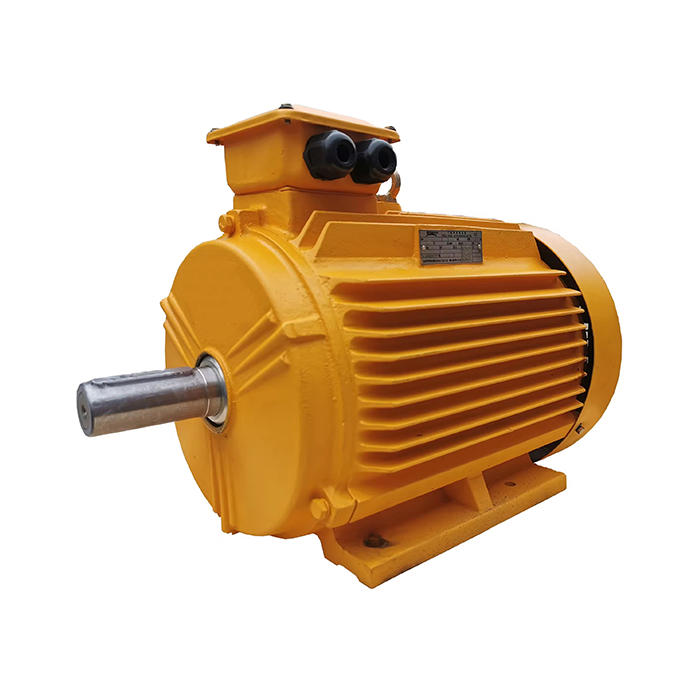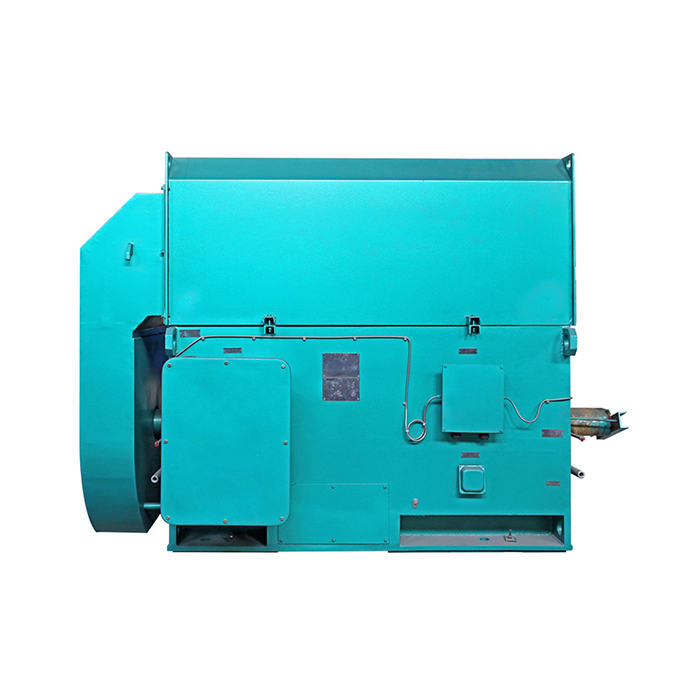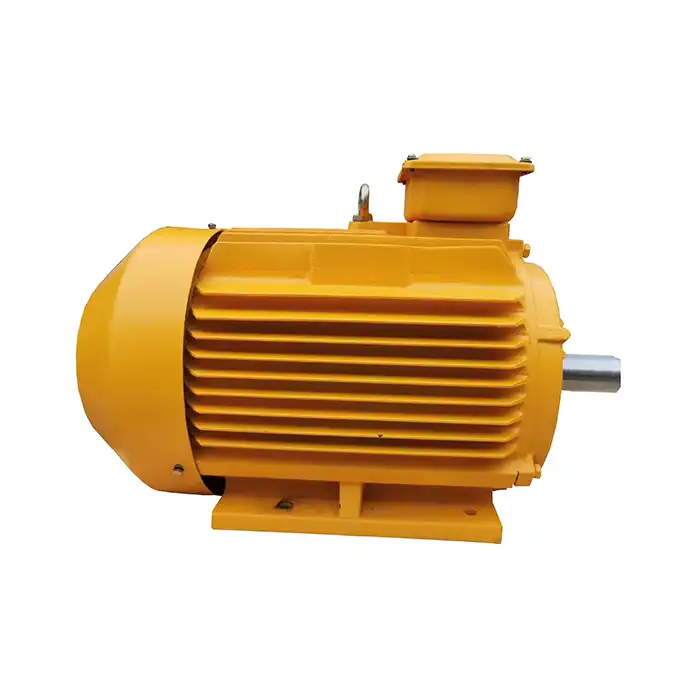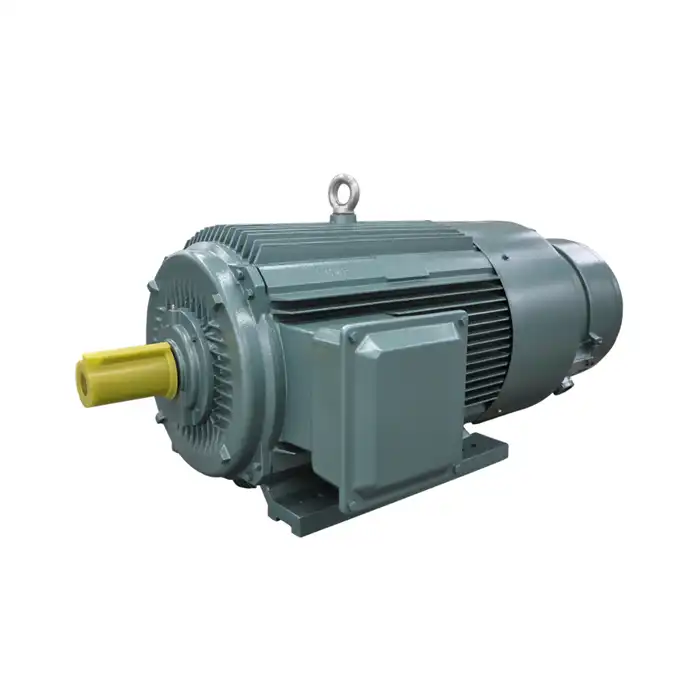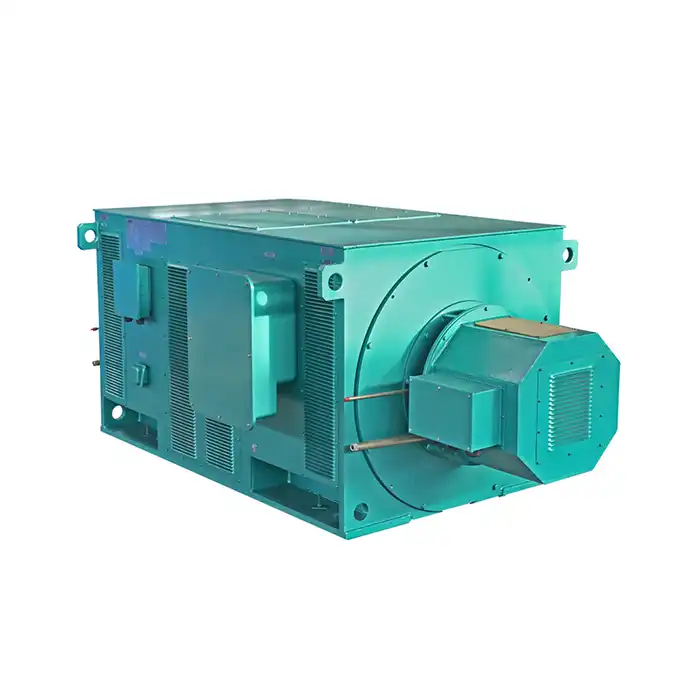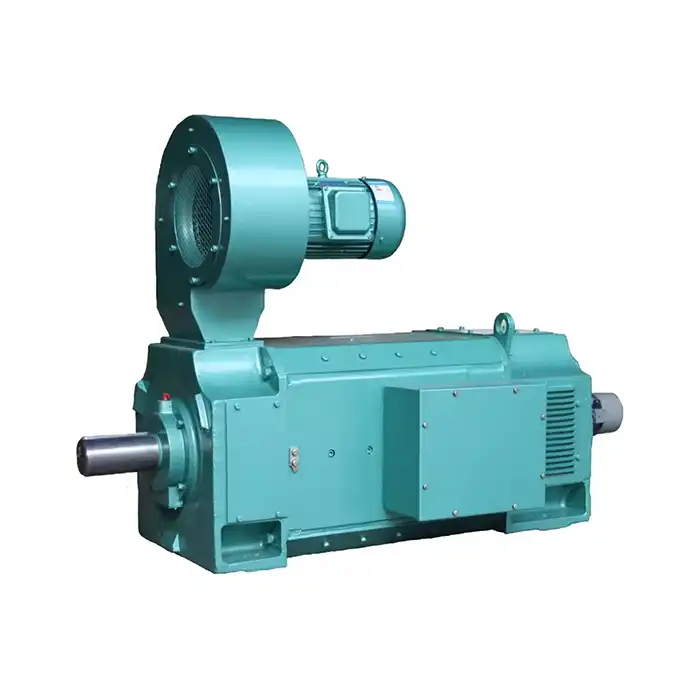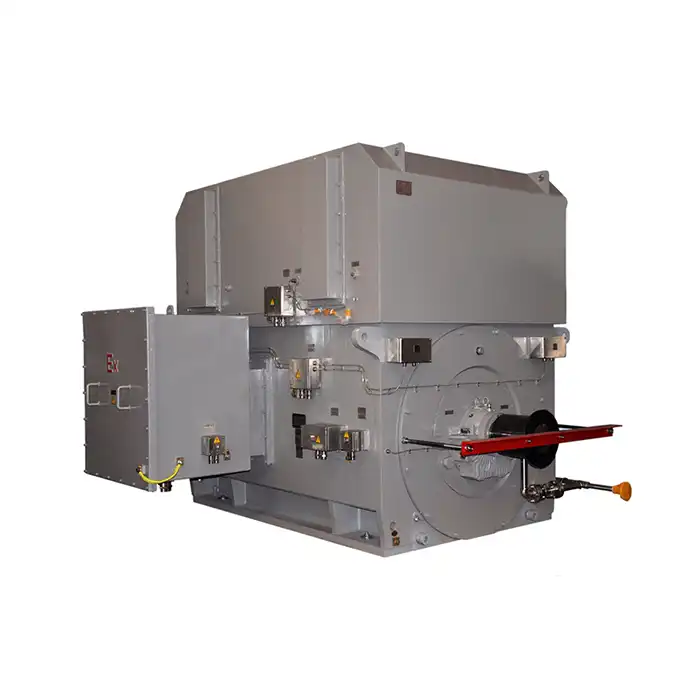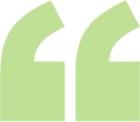Properly monitoring brush wear in a 200hp DC motor ensures long-lasting performance and prevents unexpected failures. Brush wear happens when carbon brushes erode from friction and electrical contact during motor operation. By keeping a close eye on brush condition through regular inspections and using advanced monitoring methods, industries can sustain smooth motor function and minimize downtime. Implementing these monitoring strategies extends the service life of the motor's brushes, which is vital for heavy-duty industrial environments where a 200hp DC motor powers critical equipment. Whether in manufacturing lines or renewable energy systems, maintaining brush health plays a key role in operational reliability.
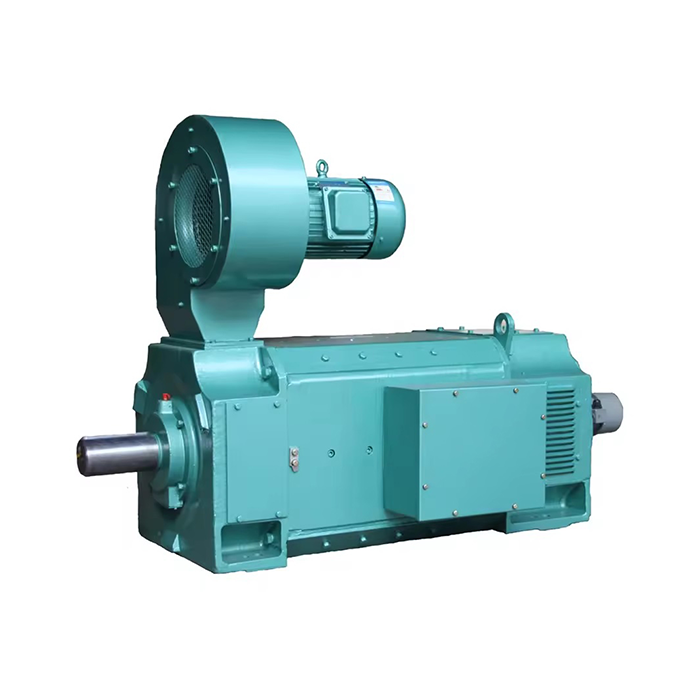
Series:Z4
Frame number: 100-450
Application:Z4 series motorsThis series of motors can be widely used in various industrial sectors such as metallurgical industrial rolling mills, metal cutting machine tools, papermaking, dyeing and weaving, printing, cement, and plastic extrusion machinery.
Power range:1.5-600kW
Voltage range: 160V,440V, etc.
Certificate: The performance of this series of motors not only complies with the national standard GB/T755 "Basic Technical Requirements for Rotating Electrical Machines", but also basically complies with the German VDE0530 standard.
Advantage:Z4 series DC motor has greater advantages than Z2 and Z3 series. It can not only be powered by DC unit power supply, but also suitable for static rectifier power supply. It has small moment of inertia, good dynamic performance, and can withstand high load change rates. It is especially suitable for control systems that require smooth speed regulation, high efficiency, automatic speed stabilization, and responsive response. It has reached the current international advanced level..
Others: SKF, NSK, FAG bearings can be replaced according to customer requirements.
Understanding 200hp DC Motor Brush Wear
Brush wear in a 200hp DC motor represents the gradual degradation of the carbon brushes, which serve as vital conductive elements maintaining electrical contact with the motor's commutator. This wear is influenced by factors such as operational load, environmental conditions like dust or moisture, and the quality of the brush material itself. In demanding applications—such as metallurgical rolling mills, paper production, or mining—these factors accelerate brush erosion.
Carbon brushes endure constant friction and electrical arcing, which slowly reduces their mass and affects motor performance by increasing resistance and potentially causing overheating. Understanding these underlying causes helps industries craft an effective maintenance plan that prioritizes monitoring brush wear for optimal functionality. Using visual aids such as diagrams of brush-to-commutator contact patterns can further clarify the wear mechanisms to maintenance teams and engineers responsible for motor upkeep.
Techniques for Monitoring Brush Wear
Several proven techniques exist to monitor brush wear in powerful motors like the 200hp DC models used across various industries. Visual inspection remains fundamental, requiring the motor to be stopped and the brush housing opened for manual measurement of brush length and observation of surface condition. Tools such as calipers enable precise measurement to assess whether brushes need replacement.
For more continuous and accurate monitoring, some operations incorporate sensors that detect brush position or wear level. These sensors can trigger alerts when brush length falls below a critical threshold, thus preventing motor damage. Coupling sensor data with software systems allows real-time tracking and predictive maintenance analytics.
Advanced non-invasive methods, including infrared thermography and vibration analysis, also provide indirect evidence of brush wear by identifying abnormal temperature rises or mechanical vibrations caused by deteriorated brushes. Such techniques have proven effective in sectors like manufacturing and energy generation, where minimizing downtime is paramount.
Case studies of industrial plants implementing these techniques demonstrate substantial reductions in unexpected shutdowns and maintenance costs. Selecting an appropriate monitoring method depends on the facility's operational demands, motor design, and budget considerations, with a combination of visual inspections and sensor technology often delivering the best results.
Maintenance Tips for 200hp DC Motors
Routine maintenance is the cornerstone for extending the service life of 200hp DC motors. Establishing a structured maintenance schedule ensures that brush wear doesn't go unnoticed and other critical components remain in prime condition.
- Effective maintenance includes regular cleaning of commutators and brush holders to remove dust and debris, which accelerate abrasion.
- Proper lubrication of bearings, such as those from SKF, NSK, or FAG that are compatible with the Z4 series motors, prevents unnecessary mechanical strain.
- Inspecting motor ventilation for blockages ensures cooling systems operate efficiently, protecting brushes against heat-related degradation.
- Periodic electrical testing helps verify insulation and performance integrity.
- Immediate replacement of brushes that have worn beyond safe limits avoids costly damage to the commutator bars.
- Maintenance teams can benefit from checklists that specify inspection frequencies, measurement benchmarks, and cleaning protocols.
These well-rounded maintenance practices not only prolong brush life but optimize overall motor efficiency—critical for high-demand sectors such as steel mills or marine propulsion systems.
Selecting the Right 200hp DC Motor Supplier
Choosing a reliable 200hp DC Motor supplier is crucial for ensuring that your 200hp DC motor delivers consistent quality and dependable service.
Trusted suppliers such as Shaanxi Qihe Xicheng Electromechanical Equipment Co., Ltd. (XCMOTOR) deliver specialized, customized solutions with the flexibility to match unique power specifications and environmental considerations. XCMOTOR's Z4 series offers compliance with both Chinese national standards and German VDE0530 norms, featuring advantages such as small inertia and high dynamic response.
Evaluating supplier reviews, after-sales support, warranty terms, and product availability ensures buyer confidence. In industrial automation and power generation, partnering with suppliers who provide fast delivery, genuine parts, and technical support—like XCMOTOR does—is invaluable.
Integrating Our Solutions
XCMOTOR leverages decades of expertise in DC motor technology to craft high-quality, high-performance motors, including the robust 200hp DC motor suitable for continuous heavy-duty operation across industries. We provide tailored solutions that meet stringent operational needs such as automatic speed stabilization and rapid response to load variations.
Our products undergo rigorous quality control stages—from manufacturing to calibration—to guarantee compliance with international certifications like CE and CCC. Customers attest to the durability and efficiency of our motors, which reduce energy consumption and maintenance downtime notably.
By collaborating with XCMOTOR, businesses benefit from customized power equipment solutions backed by dedicated support available even on weekends, free product delivery, and a 30-day open return policy. This comprehensive service framework enhances trust and eases integration into existing systems.
Frequently Asked Questions
Q1: How often should brush wear be checked in a 200hp DC motor?
A: It's recommended to inspect brushes at intervals based on operational hours and load factors—typically every 500 to 1000 hours of motor use. For motors running under harsh conditions, more frequent checks ensure timely replacement and prevent commutator damage.
Q2: What are the clear signs that brushes need replacement?
A: Visible signs include brushes shorter than the manufacturer's minimum length, excessive sparking, unusual noises, or increased motor vibrations. Electrical tests showing higher resistance or irregular speed performance also indicate brush wear.
Q3: Is professional assistance required for brush replacement?
A: While basic brush replacement can be done by trained personnel, complex motors like the 200hp DC series often require experienced technicians to ensure correct seating and commutator surface maintenance, preventing premature wear and ensuring optimal motor function.
Conclusion
Careful monitoring of brush wear in 200hp DC motors is fundamental to maximizing motor longevity and operational efficiency. Understanding the causes, applying suitable monitoring techniques, and implementing disciplined maintenance schedules safeguard against costs associated with unplanned downtime. The advantages of opting for a high-quality DC motor and selecting a trustworthy supplier like XCMOTOR are significant, providing industrial sectors with reliable, energy-efficient power solutions tailored to their exacting requirements.
Staying proactive about brush status and motor health ultimately ensures continuous productivity essential in industries from metal processing to renewable energy.
Where to Buy 200hp DC Motor
If you're searching for a robust 200hp DC motor with reliable performance for your industrial needs, XCMOTOR offers an exceptional range of products that meet the highest quality and efficiency standards. Our custom voltage options and advanced Z4 series ensure we address diverse application challenges effectively. For personalized service, fast delivery, and professional support, contact us at xcmotors@163.com. Partner with XCMOTOR to boost your equipment's power and reliability today.
References
- Electric Machinery Fundamentals by Stephen J. Chapman – In-depth exploration of brush wear mechanisms in DC motors.
- IEEE Transactions on Industrial Electronics – Studies on sensor-based monitoring techniques for motor brush wear.
- Industrial Motor Control by Stephen L. Herman – Practical guidance on maintenance and inspection of DC motors.
- SIEMENS Technical Manual Series – Comprehensive details on selecting and maintaining industrial motors.
- ABB White Papers on Advanced Motor Management – Insights into predictive maintenance for motor brushes using IoT.
- Renewable Energy Systems Magazine – Case studies on DC motor applications and monitoring in wind and solar installations.



